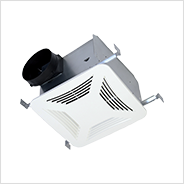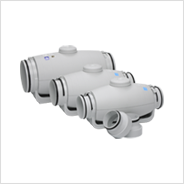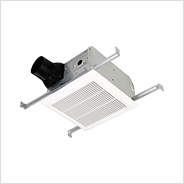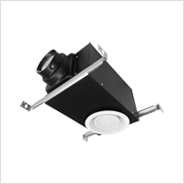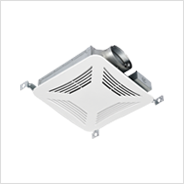S&P Green Ventilation Standards
JencoFan has been producing quality, environmentally sustainable ventilation products and systems for over 50 years. Our products deliver exceptional performance and energy efficiency while reducing the impact on the environment. JencoFan is dedicated to air quality and providing suitable solutions for your ventilation needs.
A policy that is not respectful of the environment would be incompatible with the JencoFan philosophy. Our future vocation implicates us deeply in the legacy that we are going to leave to our children. S&P (Spain) is the only company of the sector ISO-14001 certified by the Environmental Management: for that the emitted gases are seeped/filtered, and all the liquid or solid wastes that are generated in the productive processes are recycled, to proceed to its subsequent use.
ENERGY STAR®
ENERGY STAR products are independently certified to save energy without sacrificing features or functionality. Saving energy helps prevent climate change. Look for the ENERGY STAR label to save money on your energy bills and help protect our environment.
Q: Why is an ENERGY STAR® qualified fan better than a standard fan?
ENERGY STAR certified fans provide better efficiency and comfort with less noise, and they feature high-performance motors and improved blade design, providing better performance and longer life. ENERGY STAR certified ventilation fans use 70% less energy than standard models.
Q: What S&P Fans are ENERGY STAR® qualified?
Look for the ENERGY STAR® logo to find S&P fans that have been verified to meet ENERGY STAR® requirements.
TD-MIXVENT
PCD
TD-SILENT
PC80X, PC110X, PC150
PCV80
PCRL80 and PCRL80F
PCLP80 and PCLP100
CALGreen (California Building Standards Code)
Q: What is CALGreen (Title 24 Part 11)?
CALGreen (the California Green Building Standards Code) is Part 11 of Title 24. Title 24 is published by the California Building Standards Commission, and it applies to all building occupancies throughout the State of California. Title 24 applies to all building occupancies, and related features and equipment throughout the state, and contains requirements to the structural, mechanical, electrical, and plumbing systems, and requires measures for energy conservation, green design, construction and maintenance, fire and life safety, and accessibility.
Q: What does CALGreen require for Ventilation?
Bathroom Exhaust Requirement:
- Each bathroom shall be mechanically ventilated and shall comply with the following:
- Fans shall be ENERGY STAR compliant and be ducted to terminate outside the building.
- Unless functioning as a component of a whole house ventilation system, fans must be controlled by a humidity control.
- a) Humidity controls shall be capable of manual or automatic adjustment between a relative humidity range of less than 50% to a maximum of 80%.
- b) A humidity control may be a separate component to the exhaust fan and is not required to be integral or built-in.
Note: For CALGreen a "bathroom" is a room which contains a bathtub, shower, or tub/shower combination. Fans are required in each bathroom.
Q: What does JencoFan recommend to meet CALGreen Standards?
To meet CALGreen, you must start with an ENERGY STAR compliant fan. JencoFan's PC Series, TD-MIXVENT, and TD-SILENT are all ENERGY STAR qualified. JencoFan Recommends the following options to meet the standard:
- Remotely Mounted Fan Option: TD-MIXVENT or TD-SILENT with a wall/ceiling mounted humidity sensor.
- Good Option to Meet Code: PC Fan with a wall/ceiling mounted humidity sensor
- The BEST Option: PC with JencoFan's unique Plug-&-Play humidity sensor (PCHS)
LEED for Homes
LEED, or Leadership in Energy & Environmental Design, is a green building certification program that recognizes best-in-class building strategies and practices. To receive LEED certification, building projects satisfy prerequisites and earn points to achieve different levels of certification. Prerequisites and credits differ for each rating system, and teams choose the best fit for their project.
Q: How can JencoFan products help with my LEED for Homes Points?
JencoFan can help with the following requirements and points to gain LEED v4 Certification: Homes:
Required: Ventilation
Single Family Homes: Meet all of the following requirements for local exhaust and outdoor air ventilation including the requirements of ASHRAE 62.2 – 2010, sections 4, 5 and 7 and Section 1504.4 of the 2009 International Residential Code (IRC).
Multifamily Homes: Design and install a whole-unit ventilation system for each individual dwelling unit that complies with the requirements of ASHRAE Standard 62.2 – 2010 (with errata) or local equivalent, whichever is more stringent, and all local exhaust requirements for Single Family section, above.
Enhanced Ventilation (Possible 3pts)
OPTION 1: Enhanced Local Exhaust (1pt)
Use one of the following strategies in every bathroom with a shower, bathtub, or spa (i.e., half-baths are exempt) to control the use of the local exhaust fan:
- an occupancy sensor;
- an automatic humidistat controller;
- a continuously operating exhaust fan; or
- a delay timer that operates the fan for at least 20 minutes.
JencoFan's BEST Solution: PCD110XM - PC with DC Motor & Motion Sensing Grille.
AND / OR
OPTION 2: Enhanced Whole-House Ventilation (2pts)
Install a balanced whole-house ventilation system (not just exhaust only or supply only) that meets the minimum ventilation requirements of ASHRAE Standard 62.2 – 2010, Sections 4 and 7, or local equivalent whichever is more stringent. Program the system such that it does not exceed the standard's requirements by more than 10%.
For multifamily buildings, meet the above requirements for all in-unit residential spaces in both options 1 and 2.
JencoFan's BEST Solution: TD-MIXVENT Fan with FT622 ASHRAE 62.2 Control.
Enhanced Garage Pollutant Protection (Possible 1pt)
CASE 1: Single Family
OPTION 1: Exhaust Fan in Garage (1pt)
Install in the garage an exhaust fan that is rated at least 75 cfm (35 liters per second) and meets ENERGY STAR cfm/w performance requirements.
The fan must vent directly to the outdoors and have an automatic timer control linked to an occupant sensor, a light switch, a garage door opening-closing mechanism, a carbon monoxide sensor that turns on the fan when ambient CO levels reach 35 ppm, or equivalent. The timer must be set to provide at least three air changes each time the fan is turned on.
Projects that earn the EPA Indoor airPLUS label automatically meet the requirements of Option 1.
CASE 2: Multi-Family
OPTION 1: Exhaust Fan in Multicar Garage (1pt)
For a garage that accommodates more than three cars, follow the requirements in ASHRAE 62.1–2010. Exhaust the garage sufficiently to create negative pressure with respect to adjacent spaces with the doors to the garage closed. Provide self-closing doors and deck-to-deck partitions or a hard lid ceiling. The pressure differential with the surrounding spaces must be at least 5 Pascals (Pa) (0.02 inches of water gauge) when all doors are closed. The exhaust fan may either run continuously, or on a carbon monoxide sensor that turns on the fan when ambient CO levels reach 35 ppm.
OR
OPTION 2: Exhaust Fan in Small Garage (1pt)
For a garage that accommodates one, two, or three cars, install an exhaust fan that meets ENERGY STAR minimum efficacy levels (cfm/W); direct-exhaust fans must be 100 cfm (47 liters per second) or greater, and ducted exhaust fans must be 130 cfm (61 liters per second) or greater.
The fan must either run continuously or have an automatic timer control linked to an occupant sensor, a light switch, a garage door opening-closing mechanism, a carbon monoxide sensor that turns on the fan when ambient CO levels reach 35 ppm, or equivalent. Any timer must be set to provide at least three air changes each time the fan is turned on.
Acoustic Comfort (Possible 1pt)
These requirements only apply to "acoustically sensitive" rooms, such as bedrooms, dining rooms, living rooms, and studies. ("Acoustically insensitive" rooms include bathrooms, kitchens, and hallways.) Projects may also implement the measures throughout the entire home.
OPTION 1: Prescriptive noise reduction methods
Meet all of the following requirements:
- Mechanical systems must meet the following requirements:
- Continuous ventilation fans shall have a maximum sound rating of 0.7 sones. Intermittent fans shall have a maximum sound rating of 1.5 sones, unless their maximum rated airflow exceeds 400 cfm. HVAC air handlers and remote-mounted fans are exempted, if the fans are mounted outside the habitable spaces, bathrooms, and hallways, and if there is at least 4 feet of ductwork between the fan and the intake grill.
- Meet the following best-practice HVAC installation measures:
- Ducts are securely attached (no loose connections between sections of ductwork).
- The fan housing is securely anchored.
- The damper flap closes fully, with no visible airspaces around the flap.
- For projects that are less than a half a mile away from any significant noise source such as (but not limited to) aircraft over-flights, highways, trains, and industry, exterior assemblies must include:
- Exterior windows and doors must have a minimum STC rating of 35.
- All exterior wall penetrations must be sealed with acoustical sealant, and/or otherwise treated for sound control (e.g. lined elbows on vents, lined exterior ducts where feasible).
- Attached single family homes and multi-family homes must also meet the following:
- Party walls must have a minimum STC rating of 55.
- All party wall penetrations must be sealed with acoustical sealant
- Floor/ceiling assemblies must have a minimum STC and IIC rating of 55.
AND / OR
OPTION 2: Performance-based compliance requirements
Meet all of the following. The tested levels must be met in the acoustically sensitive room that is considered the worst case condition.
- The maximum background noise level in the home or unit due to exterior noise sources cannot exceed 40 dBA, based on the peak hour Leq.
- The maximum background noise level in the home or unit due to interior noise sources (HVAC systems, lighting, and other building services operating simultaneously) shall not exceed 40 dBA, based on the peak Leq.
- Party walls must have a minimum NIC rating of 50.
- Floor-ceiling assemblies between units must have a minimum NIC and FIIC rating of 50.
JencoFan's BEST Solution Option 1: TD-MIXVENT Fan as a continuous ventilation fan for whole-house ventilation.




